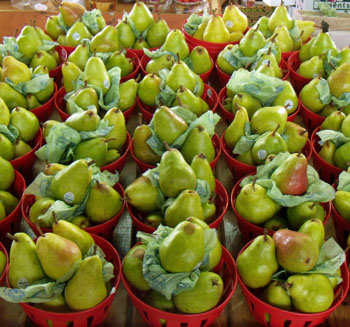
Apricot is the common name for certain members of genus Prunus of the rose family, which produce sweet, round or oblong, nearly smooth fruit (resembling a small peach), with a large, flat stone. Most cultivars (commercial varieties) originated from the common apricot, Prunus armeniaca. In Canada, apricots are grown primarily in the dry, warm southern interior of British Columbia and in southern Ontario.
Description
The primary centre of origin is in western China and European introduction of apricots likely occurred during Roman times. Apricot trees are large and spreading; leaves are large, heart shaped and dark green; flowers are white or pink. The flesh of fruit can vary in colour from white to yellow to orange and even red. The kernels are poisonous in some cultivars; in others they are sweet. Apricots are cultivated mainly for their fruit, which is consumed fresh, preserved by drying, canned, or processed into products like jam. Some species are grown as ornamentals. Apricot fruit is rich in minerals and in vitamins A and B.
Production
Factors that limit successful cultivation include sensitivity of blossoms to spring frosts, susceptibility of trees and fruit to diseases in humid climates, and high temperature requirements in summer.

 Share on Facebook
Share on Facebook Share on X
Share on X Share by Email
Share by Email Share on Google Classroom
Share on Google Classroom



